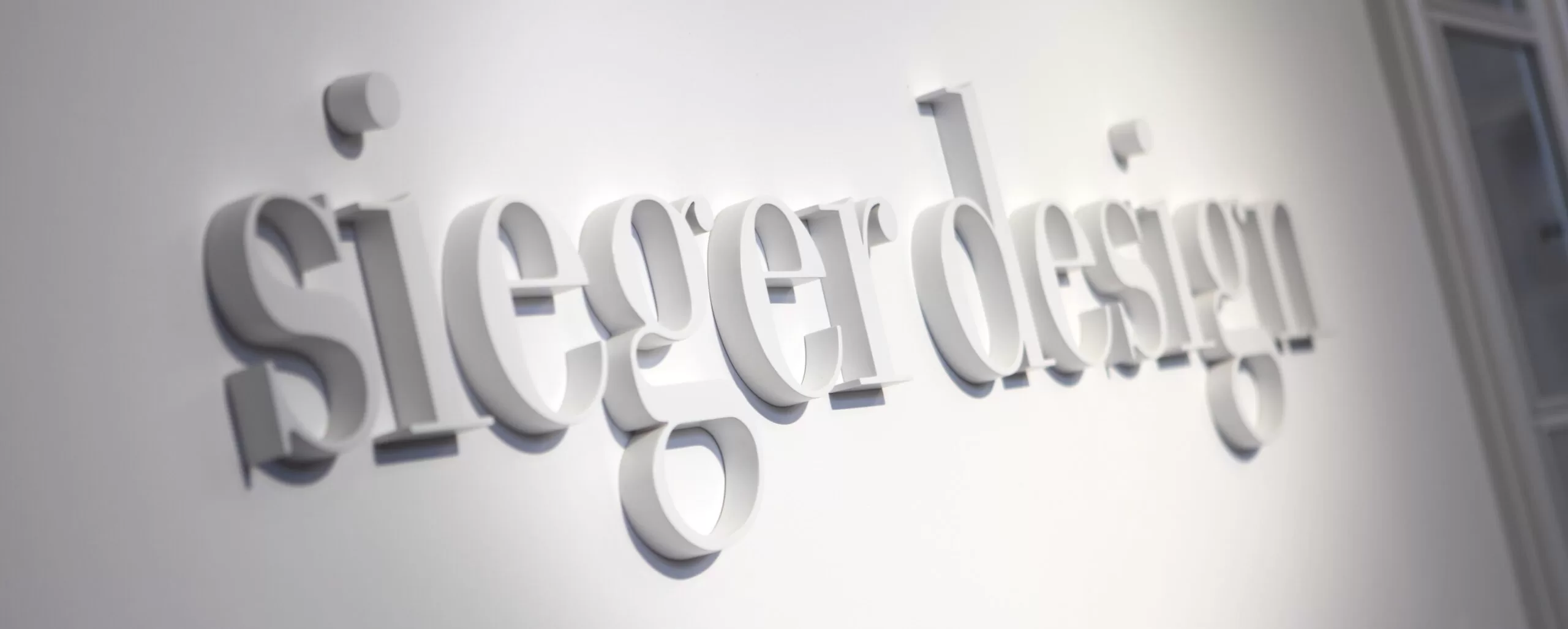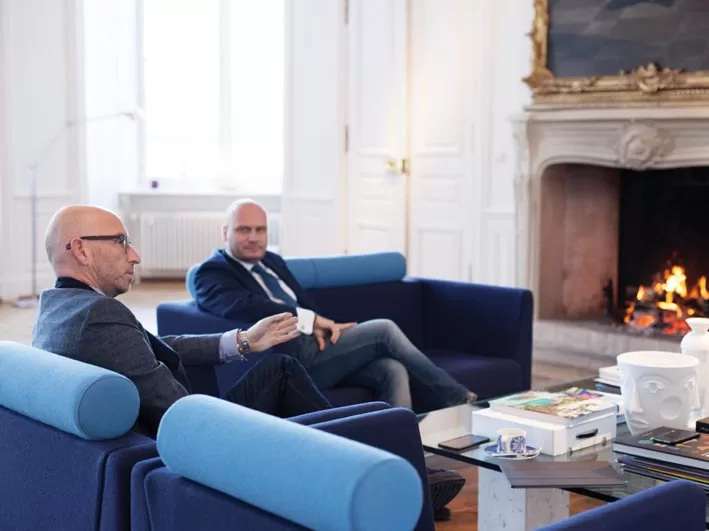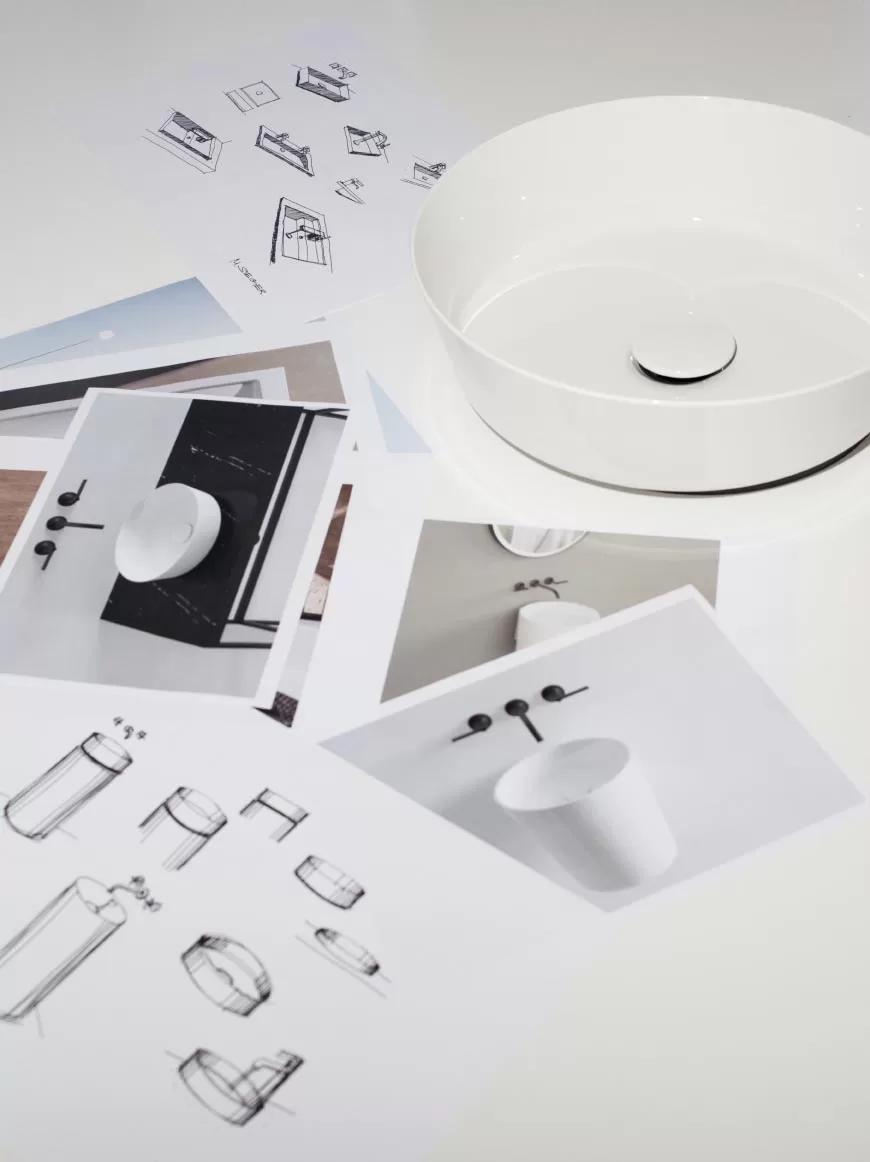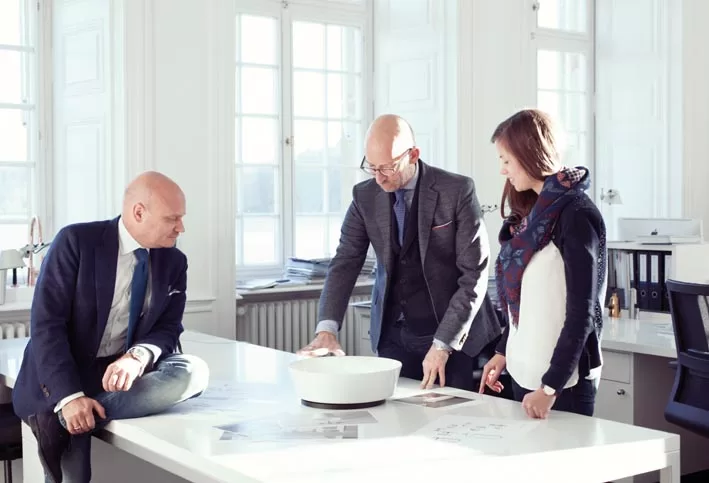sieger design has collaborated with Alape for close to 35 years, first with architect and design entrepreneur Dieter Sieger and now with his sons Christian and Michael who run the design agency.
 In the early eighties, Dieter Sieger began designing the first sanitary objects for residential buildings and yachts, which were later brought to serial production. His business kick-started after he joined Alape. What was the initial impulse?
In the early eighties, Dieter Sieger began designing the first sanitary objects for residential buildings and yachts, which were later brought to serial production. His business kick-started after he joined Alape. What was the initial impulse?
Michael Sieger: Our father always had a soft spot for bathrooms – even as an architect. At that time it was quite unusual to dedicate yourself intensively to this room. His sailing hobby brought him into contact with shipyards. The interior furnishing of his own “Trintella 42” was the starting point of his career as an interior designer for sailing boats and yachts.
Christian Sieger: Just before launching one of the boats, a mishap happened to a grey enamelled basin. He called Alape and requested a quick replacement. In return, he was asked to send a picture of the yacht’s bathroom. Soon after, the former company manager Heinrich Feldhege invited our father to discuss bathrooms with him. This quickly led to the first product concept “LaverSet” and his third career as a bathroom and industrial designer.

The collaboration between Alape and sieger Designs has been ongoing for 35 years now. How are long-lasting partnerships typical for your work?
Christian Sieger: We see each other as partners. In many cases, we don’t just focus on the design but also on marketing and other aspects. Our aim is to enter longterm partnerships. This partnership-based approach helps design to unfold its quality. As external partners, we can offer companies an independent view, a fresh perspective and progressive ideas. In the end, this is what makes our collaboration so successful.
How has Alape developed as a brand? Where do you see it today?
Christian Sieger: The architectural clarity of this brand has a formative influence. My dream is that the warmth, which emanates from the bathroom as an archaic room, becomes perceptible. In the past years, we were quite successful at this. We show bathroom environments and visions that convey a clear message: This is a place where I can feel comfortable.
Michael Sieger: The brand focuses strongly on planners and architects. By keeping a constant eye on the market, we noticed a noticeable decrease in demand for high-end ready-to-use solutions. Manufacturers of components are gaining more importance. Architects or interior architects created individual designs for each project. Alape is a predestined partner to all of them.

What are the steps involved from the first idea to the final product?
Michael Sieger: We start off with a sketch, which is quickly transformed into a model. Initially, this can be improvised and made of cardboard. The important thing is to quickly develop a feel for the sizes and proportions. For further elaboration, we recur to our workshop’s model making facilities. If possible, Alape tries to implement the design in a 1:1 scale ratio, right away. If it can be welded just like our latest designs, it doesn’t take too long before the desired result is achieved. Otherwise it takes longer until the tools are ready.
Christian Sieger: We install and test the 1:1 prototype at our workshop and see it in a spatial context. We check how the object fits together, whether the dimensions are correct, and if it matches with the existing grid logic. Even the colours and materiality of the furniture surfaces and the accessories are matched to each other.
What inspired your latest Alape product and what was the greatest challenge?
Michael Sieger: So far, the pattern vocabulary has been based on a very strict geometry. Meanwhile we are trying to expand Alape’s syntax a little bit. It is important to make things appear more charming and elegant in a contemporary context while adding modularity and versatility. Our aim is to constantly improve the design language. As important as an evolutionary development might be, one should not generate a creative dogma.

How will washplaces and bathrooms develop in the future?
Christian Sieger: Luckily, they will develop quite heterogeneously: There are people who primarily attribute increased comfort and wellness to more technology. This is something which hasn’t happened in the bathroom for a long time because there was scepticism on how compatible electronics and the humid conditions could be. This is no longer an issue. Many people would like to be able to prepare their bathroom remotely – such as pre-heating the sauna, for instance. At the same time, there is something quite archaic about washplaces. For our technical equipment we have charging devices. The bathroom is the ideal place to regenerate ourselves.
About Alape
Alape was founded in 1896 by Adolf Lamprecht in Penig, Saxony, Germany, as an enamel products business. Today, the company with more than 200 employees at two production sites in Goslar, Germany, produces aesthetic washplace solutions for the private and semi-public sectors. As a manufacturer, Alape stands for technically functional quality standards and inspiring design. By combining glassed steel with a variety of high-quality materials, Alape creates individual designs for an environment with an architectural aesthetic. For more information visit www.alape.com
Interview courtesy Dornbracht Asia Pacific Ltd.





































